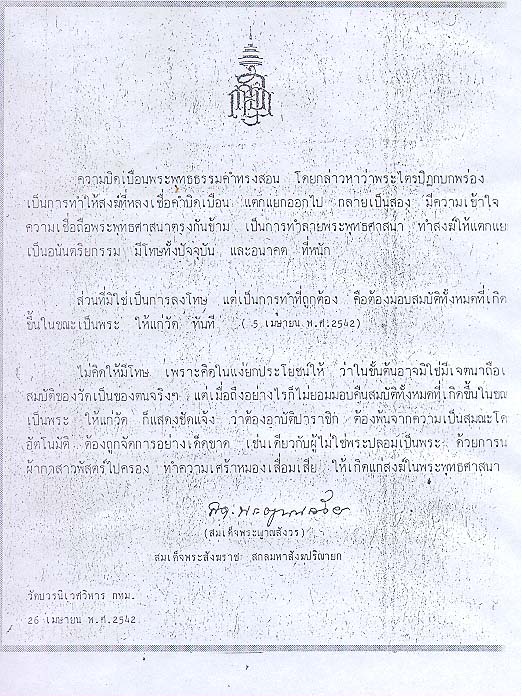 |
 ความคิดเห็นที่ 8
ความคิดเห็นที่ 8 |
 |
3. Foundations of Mindfulness
Once we have the tools, or weapons for practicing
Dhamma, the next subject I would like to introduce to us
all is the Four Foundations of Mindfulness (สติปัฏฐาน).
This means practicing mindfulness and having clear
comprehension of the body, feelings, mind, and/or
mind-objects, depending on each individual's natural
tendencies. Some examples are mindfulness of bodily
movement when doing walking meditation or when
breathing in and breathing out.
In the beginning, before
mindfulness has been developed, one can do the
concentration practice (samatha), which means bringing
one's attention to the body as the object - in a relaxed
way. When the mind gets more developed, we can
observe that bodily movement and movement of the air
when breathing in and out are just objects to be seen.
This is impermanence, suffering, and non-self right in
front of our eyes.
Once we can do that, the mind gains strength
through mindfulness and clear comprehension. Now,
whenever mental factors appear, the mind will automatically
detect them. For example, when happiness,
sadness, wholesome, and unwholesome states enter
the mind, all of these mental factors are observed, just
like any bodily object.
For those good at observing mental factors, the
suggestion is to continue with the practice. But for
those not comfortable with this exercise, the suggestion
is to go back and observe just bodily objects.
แก้ไขเมื่อ 14 ต.ค. 52 14:12:36
| จากคุณ |
:
สยามสบายสไตล์สยาม 
|
| เขียนเมื่อ |
:
14 ต.ค. 52 14:11:31
|
|
|
|
 |






